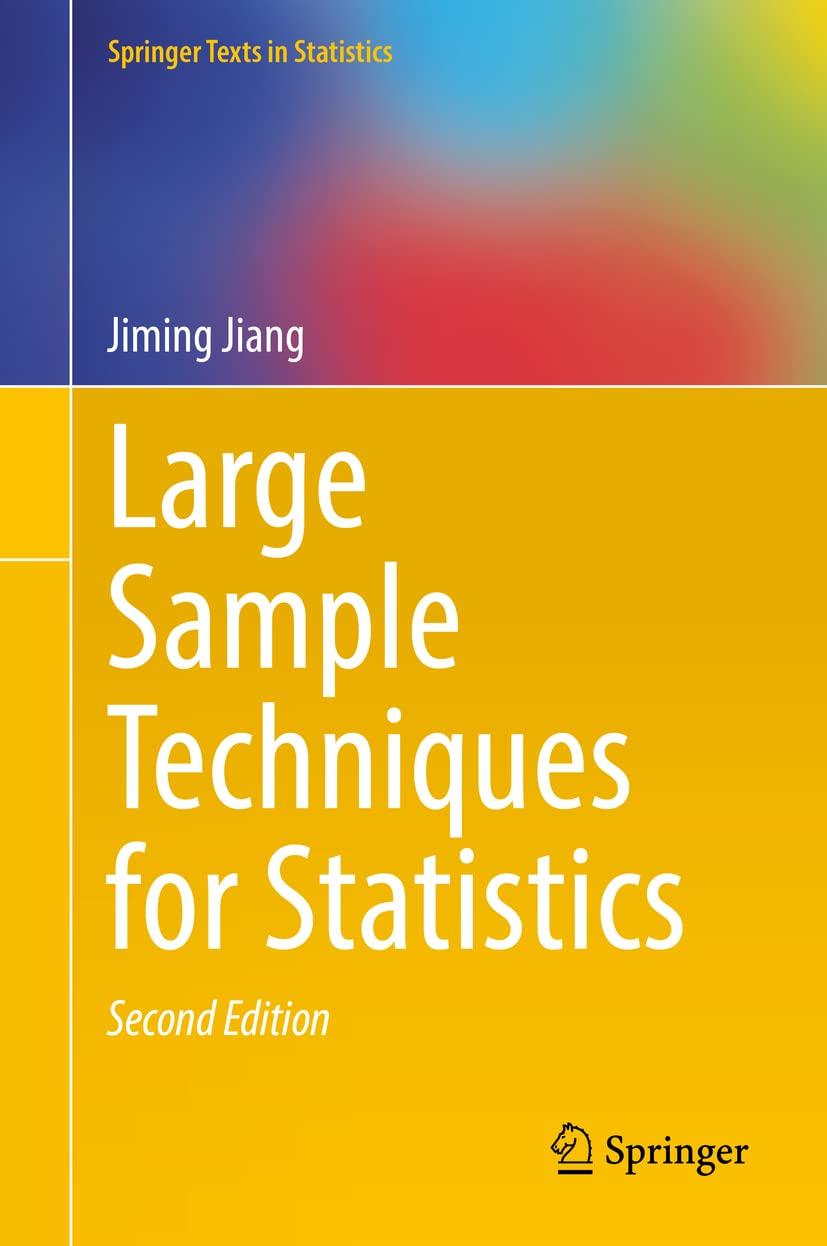This exercise is associated with Theorem 16.3 regarding the LSD of the Fisher matrix. As in the
Question:
This exercise is associated with Theorem 16.3 regarding the LSD of the Fisher matrix. As in the previous exercise, you are asked to carry out a simulation study, and compare numerically the ESD of the Fisher information with its LSD. Here, you will consider n1 = 2n, n2 = n, and p = n/2. As for the value of n, consider, again, n = 10 and n = 100.
(a) Generate independent random vectors, X1, . . . , Xn1 , and, independently, Y1, . . . , Yn2 , from the N(0, Ip) distribution. Then, compute the S1,n1 and S2,n2 defined above Theorem 16.3, and the Fisher matrix Fn ≡ Fn1,n2 .
(b) Compute the eigenvalues of Fn, say, λn,1, . . . , λn,p (note that Fn is a p × p nonnegative definite matrix). Save the result.
(c) Repeat (a),
(b) N = 1, 000 times. Then, for K = 10, compute the proportions, pn,k = 1 p |{1 ≤ j ≤ p : λn,j ≤ a + (k/K)(b − a)}|, 0 ≤ k ≤ K.
(d) Compute the probabilities, pk = P[X ≤ a+(k/K)(b−a)], 0 ≤ k ≤ K, where X follows the distribution with the pdf (16.15) with τ = 1 and γ = 1/2, γ1 = 1/4, and γ2 = 1/2. Note that p0 = 0 and pK = 1.
(e) Make a table that compares pn,k with pk, 0 ≤ k ≤ K. Do this for both n = 10 and n = 100. Does pn,k appear to approach pk, 0 ≤ k ≤ K, as n increases?
Step by Step Answer:







